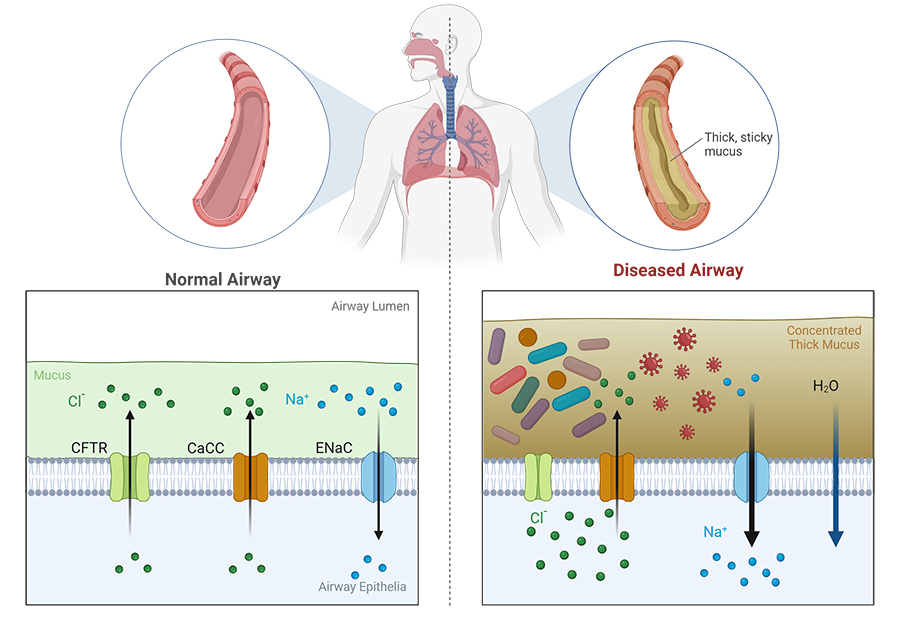About Cystic Fibrosis


Cystic Fibrosis (CF) is an autosomal recessive disease caused by a mutation in the gene coding for the Cystic Fibrosis Transmembrane conductance Regulator (CFTR). Located on the long arm of chromosome 7, there are over 2200 known disease causing mutations in the gene. The most common mutation is a deletion of the 508th amino acid,a phenylalanine. CF is a fairly common genetic disease among the Caucasian population affecting approximately 1 in 2500 live births. It is less common among other ethnic groups.
The gene product (CFTR) is a large (1480 amino acids, 175000 Daltons), ligand gated ion channel belonging to the ABC transporter family. It is controlled by phosphorylation of a large region of the molecule known as the R domain and by the hydrolysis of ATP. When open, the channel allows chloride and bicarbonate ions to pass down their electrochemical gradient. This movement of ions, in turn, drives the movement of water across the tissue epithelium.
In healthy airways, a well-balanced movement of ions (Na+ and Cl-), water and mucus, across the lung epithelium results in hydrated, fluid mucus. In diseases like CF, the movement of ions is blocked and the movement of water is interrupted resulting in thick, sticky mucus accumulating in the airways because of dehydration, which leads to increased mucus contractions and mucus accumulation due to defective mucociliary clearance.
The known disease causing mutations in CF can have different impacts on the protein and its function. As illustrated in the second figure, mutations are divided into 7 classes: Class I: produces no protein, Class II: protein is produced, but is misfolded, Class III: protein is produced, but gating is impaired, Class IV: protein is produced, but electrical conductance is impaired, Class V: less protein is produced, Class VI: protein is produced, but it is less stable and is degraded quickly, Class VII: no mRNA is produced.